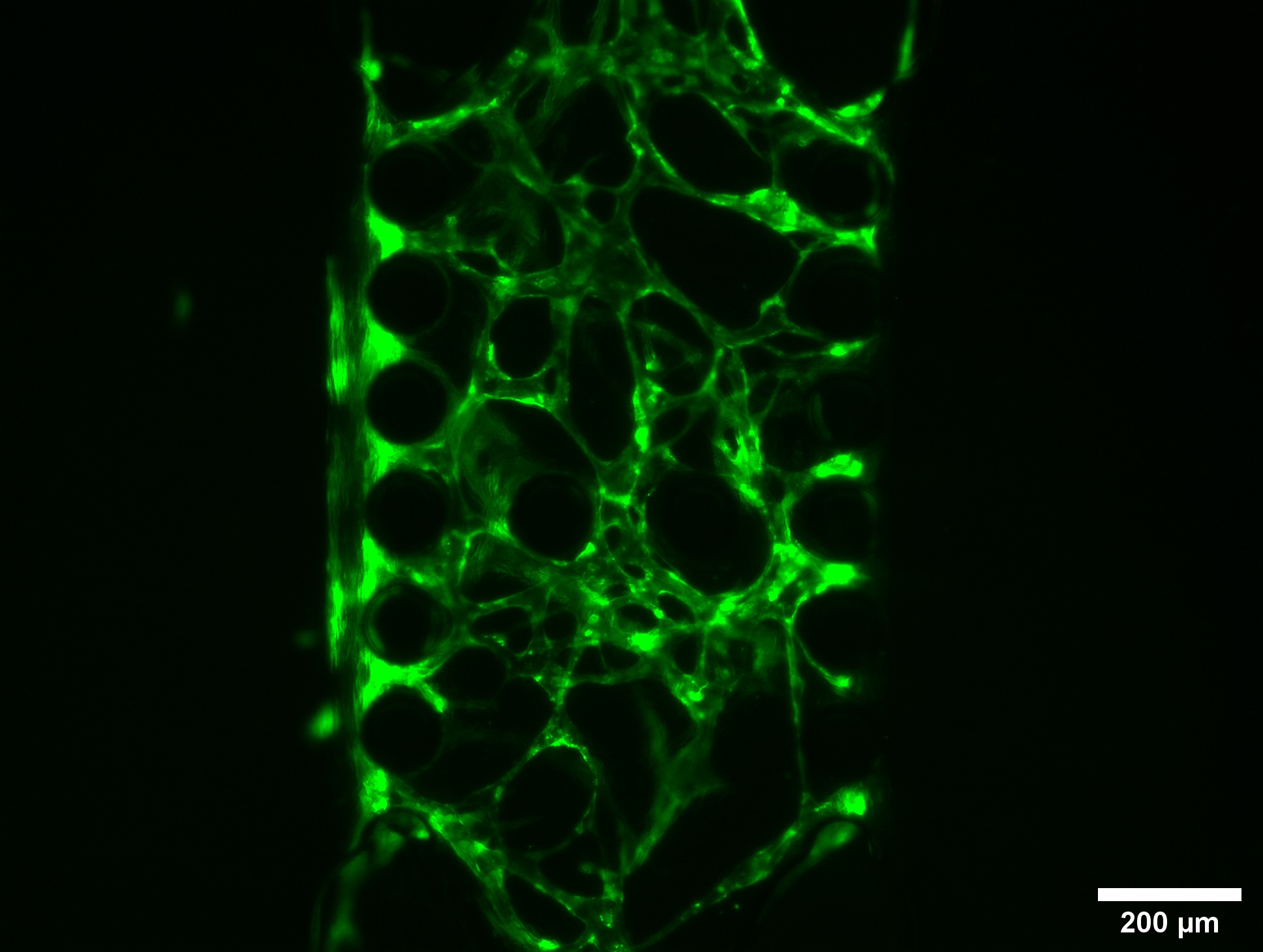Long-term study of vascularized pancreas-on-chip
Fabrice Navarro1, Marie Line Cosnier1, Remco Den Dulk1, Camille Laporte1,2, Estelle André1, Amandine Pitaval2, Emily Tubbs3, Sandrine Lablanche3, Pierre Yves Benhamou3, Yves Fouillet1, Xavier Gidrol2.
1Technologies for Healthcare and Biology, CEA, LETI, Grenoble, France; 2BIOMICS, CEA, Grenoble, France; 3Laboratory of Fundamental and Applied Bioenergetics (LBFA), INSERM U 1055 , Grenoble University Hospital, Grenoble, France
Microfluidic Systems and Bioengineering.
Diabetes (type 1 and type 2) is a chronic disease that may lead to various complications, such as vasculopathy, neuropathy, retinopathy or diabetic foot ulceration, which heavily affect patients’ quality of life. To emulate such a complex disease, we develop different organs-on-chips with human cells and focus our efforts on the possibility of long-term study of this complex system up to 1 month.
We created a specific microfluidic chip in which endothelialized Langerhanoids (or pseudo-islets) produced off-line are embedded in a finely controlled microenvironment with favorable conditions for vascularization, perfusion and long-term production of insulin. A key parameter for long-term stability is the quality of the endothelial network.

We therefore study this by varying parameters such as cellular ratio (endothelial cell concentration vs support cell concentration), culture medium composition, fluidic geometry and flow rate. By analyzing images from bright-field and fluorescence microscopy, we quantify the quality of the endothelial network, which allows us to determine optimal conditions for its development and long-term stability. At this stage, we achieve to manage a stability for more than 40 days under flow.

This new generation of organoids-on-chip and the associated experimental setup allow studying and discussing the value of the vascularization in OoC systems aiming to maintain long-term stability and biological functionality of the system.
We thank the French Carnot Institute and CEA for funding.